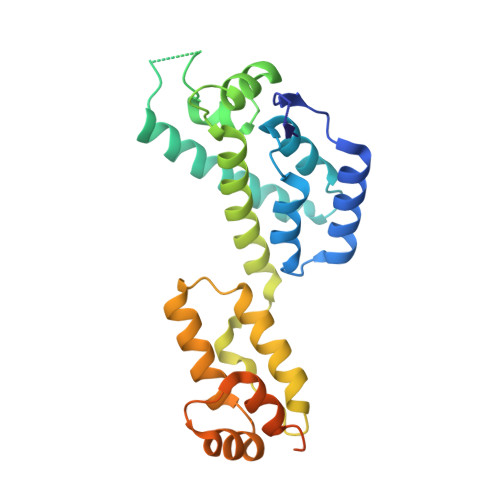Modular HIV-1 Capsid Assemblies Reveal Diverse Host-Capsid Recognition Mechanisms.
Summers, B.J., Digianantonio, K.M., Smaga, S.S., Huang, P.T., Zhou, K., Gerber, E.E., Wang, W., Xiong, Y.(2019) Cell Host Microbe 26: 203-216.e6
- PubMed: 31415753
- DOI: https://doi.org/10.1016/j.chom.2019.07.007
- Primary Citation of Related Structures:
6EC2, 6ECN, 6ECO, 6OBH - PubMed Abstract:
The HIV-1 capsid is an ordered protein shell that houses the viral genome during early infection. Its expansive surface consists of an ordered and interfacing array of capsid protein hexamers and pentamers that are recognized by numerous cellular proteins. Many of these proteins recognize specific, assembled capsid interfaces not present in unassembled capsid subunits. We used protein-engineering tools to capture diverse capsid assembly intermediates. We built a repertoire of capsid assemblies (ranging from two to 42 capsid protein molecules) that recreate the various surfaces in infectious capsids. These assemblies reveal unique capsid-targeting mechanisms for each of the anti-HIV factors, TRIMCyp, MxB, and TRIM5α, linked to inhibition of virus uncoating and nuclear entry, as well as the HIV-1 cofactor FEZ1 that facilitates virus intracellular trafficking. This capsid assembly repertoire enables elucidation of capsid recognition modes by known capsid-interacting factors, identification of new capsid-interacting factors, and potentially, development of capsid-targeting therapeutics.
Organizational Affiliation:
Department of Molecular Biophysics and Biochemistry, Yale University, New Haven, CT 06511, USA.















